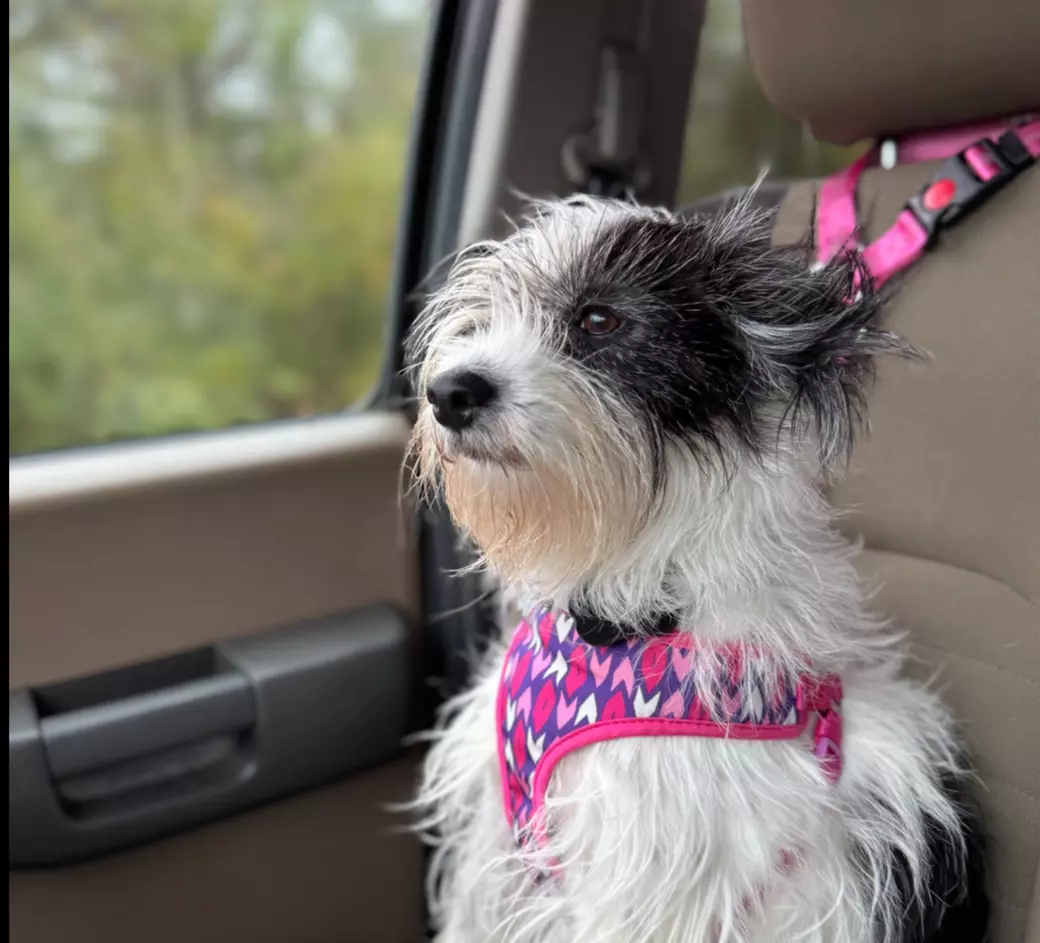Moving With Pets – Reduce Stress and Settle In Smoothly

🐾 Day 5: Moving With Pets – Reduce Stress and Settle In Smoothly
Moving can be overwhelming — for you and your pets. Even well-adjusted pets can become stressed by a big move. New smells, sounds, routines, and unfamiliar spaces can trigger anxiety — but with the right preparation, your furry friend can settle in quickly and comfortably.
Here are a few tips from someone who's moved across states with multiple pets several times:
🧘♀️ First and foremost, calm is key! If you are anxious, stressed, or emotional around them, most pets will pick up on that energy and respond accordingly.
• ASPCA's Moving Guide offers some basic before, during, and after tips to keep your pets happy; in addition to strategies for acclimating pets to their carriers in advance.
• United Van Lines article about how to move with pets is impressively thorough! They suggest keeping pets away from the moving chaos to avoid stress and the risk of esacpe as well as setting up a safe space for the animals in the new home before the unpacking begins. If you're traveling with small animals like guinea pigs, hamsters, or even fish... they have advice and tips for that as well. My personal experience with this is to be sure you're not keeping the car too cold or too warm for certain animals. Lizards don't like to be too cold, and shouldn't be for too long because it slows their digestions and can cause impactions. Trust me when I tell you, you don't want to have to soak and massage a lizard to help them poop! And with birds in particular, they are extremely sensitive to smells and fumes that come from outside the car, so it's usually best to not bring in outside air. They also are sensitive to the humidity being too low, so don't over do it on the a/c for long periods of time.
• Purina's Tips are also incredibly helpful for dog and cat owners alike. They emphasize maintaining routines ahead of the move and gradually introducing pets to their new environment upon arrival. You'll also find advice about how to handle separation anxiety in your new home and they even provide extremely helpful advice and preparation tips for those flying with dogs. You certainly want to give this article a read if you'll be in that situation.
**One thing nearly every article references is the Poisonous Plant list that I mentioned on Day 1. If you are unsure about the safety of any plant in your yard and your pet has access to it, I would highly suggest you find a plant identification app such as PictureThis or something similar. Your pet is going to be incredibly curious about everything in their new surroundings and why not remove the risk when it's so easily avoidable.
✅ Here are some examples of the biggest items to check off your list when preparing to move:
🧳 *Before the Move:*
• Pack a pet essentials bag with food, bowls, meds, favorite toys, litter, and cleanup items (i.e. the poop pick-up bags for when you make potty stops).
• A dog first-aid kit is always a good thing to keep on hand, but especially during a move when most of these items are boxed up and difficult to find.
• Double-check microchip info and ID tags. Update your pet’s microchip info if needed.
• You can also take it a step further and invest in a tracking collar for your dog. More about that below!
• Work on getting your pet as comfortable as possible in a crate/kennel/carrier. This will pay-off 10-fold during the moving process.
🚚 **During the Move:**
• Keep pets in a secure, quiet space while movers are working.
• Consider boarding sensitive pets or using a pet sitter for the day.
• Transport in a crate or seatbelt harness and offer water regularly.
🏡 **After Arrival:**
• Set up their space early in the new home — even before your own. Familiar blankets and toys help the new space to feel safe.
• Stick to feeding and walking routines as closely as possible.
• Consider using cameras to monitor your pets in their new space while you're away. It will give you a good idea of what they're getting into and how they're feeling.
• Introduce them slowly to each room — and don’t forget lots of reassurance (and positive reinforcement)!
*For the trackers, this is my experience: There are so many different options when it comes to this and I have done hours of research on it. For my particular situation, I went with a FitBark because they use Verizon towers (which is the best cell provider in my immediate area) and the tracking feature only enables when your pet is outside the range of your home's Wi-Fi signal. This allows for a much longer battery life. AirTags in my experience don't do an excellent job of tracking when they're more than 20-25 feet away from my iPhone. You can read more about this on Fi's website when they compare their own tracker with an AirTag. The GPS collars that pin-point location more precisely and update more often require MUCH more frequent charging (most I found were every 1-3 days) and you have to be within a certain range of your pet for the tracker to work...not to mention, you can't just use your phone on many of these... it requires an additional device.
With a little planning and a lot of love, your pets can feel just as at home in your next house as you do. 🏡💛
Thank you for following along with my 5-day series on house hunting with pets — I hope it’s helped you feel more prepared, confident, and calm for whatever move lies ahead.
Whether you’re planning a move across town or across states, I can help guide you — and your pets — through a smooth transition.
Categories
Recent Posts










